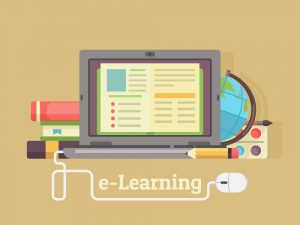There’s quite a lot of evidence that adaptive learning is one of the best examples of technology improving learning outcomes. In recent years, it is one area that has attracted funding from the Bill & Melinda Gates Foundation, which has vastly changed learning at the college level. At UC Santa Cruz, the results of their pilot adaptive learning program included an 84-percent improvement in math scores among newly admitted freshmen. Adaptive learning also has made a tremendous impact in K-12, particularly in helping struggling students achieve. It holds great promise for public schools, offering the technology to personalize course material based on each individual student’s performance.
Many schools are still finding their footing with adaptive learning, and they run into challenges of understanding the technology and how to get the most out of it. It’s not uncommon that schools or districts run into issues during the adoption process, when they do not have a clear strategy from the start. We’ve gathered some of the best lessons learned from education leaders.
Value Experience over Knowledge
It’s the most fundamental principle behind adaptive learning. The most effective way to view K-12 learning from this lens is in terms of experience. Adaptive learning must take the student beyond the traditional model, so that they are not only correctly answering a mathematical question, but that they gain a richer set of problem-solving skills to solve a real-world mathematical problem.
Lead with Values, Not Technology
One of the first steps should be to establish a philosophy of learning personalization that leads the technology adoption (and not the other way around). This stage is important for creating and sharing a set of goals, values, and trust among decision-makers. It is important for all to understand there adaptive learning is part of the larger mission – committing to innovation, creativity, and personalized learning.
Know the Problems That Adaptive Learning Should Solve
What reason is your school or district seeking out adaptive learning? Adaptive learning isn’t about being cutting-edge, but using technology as a solution to a significant problem. For example, remediation at scale for diverse and/or at-risk students is a specific problem that adaptive learning can solve.
Choose the Best Tools for the Job
There are hundreds of technological options out there, make sure you understand the difference between them. Certain platforms are designed to focus on instructor involvement, while others make exclusive use of technology to personalize the content to a student’s pace and progress. Some tools may offer a rich set of assessments to continuously flow into the curriculum, while other products only set a handful of milestone assessments. Do you know if your selected platform gives you the most control over content, so you can manually personalize content if you see fit? What type of learning data analytics does it allow you to see? Recognize that some technology platforms will suit certain types of schools better than others. The costs of investing in the wrong tool could be detrimental, so it’s important to take the time to compare and test different solutions before implementation.
Involve Teachers at Every Stage of Adoption
Getting their buy-in as early as possible pays off in the long run, because adaptive learning will change more than just the form of instruction. Adopting an adaptive learning program will greatly impact the method and the philosophy of learning, and teachers need to be central to conversations around planning and adoption. They would be able to ask the practical questions on implementation and offer insight into the problems impacting student outcomes.
Launch Beta First
If you’re looking to launch an adaptive learning program for the entire school district, you should consider launching in a controlled environment (as a beta program). Create a controlled trial, where you run simultaneous lessons from an adaptive and non-adaptive course. This would provide meaningful results at the beginning on implementation, so you can decide if any improvements can be made before the full launch.
